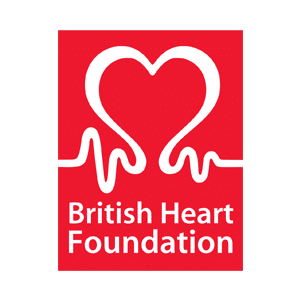Latest News
Christian Eriksen: How First Aid Training Saves Lives
Posted on Friday, 2nd July 2021

The scenes of footballer Christian Eriksen collapsing on the pitch during the Euros shocked millions of viewers across the globe. This terrifying incident highlighted how heart issues can affect anyone, and why first aid training is so important. Today’s blog takes a look at what happened to Christian and how the CPR administered on the pitch could have saved his life.
What happened?
In the 43rd minute of the game between Denmark and Finland at the European Championships, Denmark midfielder Christian Eriksen collapsed when going to retrieve the ball from a throw-in. As he was under no pressure when he collapsed it was immediately obvious that something serious had happened. Players from both teams and the referee immediately signalled for medical staff to assist him on the pitch. It was later revealed that Eriksen had suffered a cardiac arrest.
The Denmark captain Simon Kjær was one of the first people on the scene when Eriksen collapsed. Immediately recognising the seriousness of the situation he utilised his first aid training to secure Eriksen's neck, clear his airways and begin CPR before the medical teams could reach Eriksen. These actions could well have saved his teammate’s life.
As treatment continued on the pitch the Danish players formed a ring around him to protect his privacy from the TV cameras. The players and crowd were clearly devastated by what was happening, visibly crying while a stunned silence filled the stadium. From the cameras it could be seen that CPR was being conducted on the pitch to restart Eriksen’s heart. After around 15 minutes Eriksen was removed from the pitch and the game was suspended.
Denmark team doctor Morten Boasen confirmed that the player’s heart had stopped when they first assisted him but was successfully restarted on the pitch after one shock from the defibrillator. To date Christian has been making good progress in hospital and has been fitted with a heart-starting device (ICD).
Why did it happen?
Cardiac arrests are caused by electrical problems with the heart, often as a result of abnormal or irregular heart rhythms. These cause the heart to suddenly stop pumping blood, preventing oxygen getting to the brain and their body from functioning. They often occur during exercise as the heart is having to beat more rapidly to pump blood around the body. While footballers have to undergo regular medicals, these irregularities can often go undetected with sufferers displaying no previous symptoms.
This is not the first time seemingly fit and healthy athletes have suffered from undiagnosed heart conditions. In 2012, footballer Fabrice Muamba suffered a cardiac arrest on the pitch while playing for Bolton Wanderers against Tottenham Hotspur. His heart stopped for 78 minutes, meaning he was technically dead for over an hour before being revived at a local hospital. While he was incredibly lucky to survive, he was never able to play professional football again and retired aged 24.
If these professional athletes seemingly in peak condition can suffer from these heart conditions, then anyone can. This is why it is essential as many people are first aid trained as possible in order to save lives.
How did first aid help?
The response of Simon Kjær to administer first aid could well be key to Eriksen’s recovery. Timely use of CPR, where chest compressions are used to restart the heart pumping blood around the body, is critical in recovery from cardiac arrests. The British Heart Foundation (BHF) says that every minute without CPR and defibrillation decreases the casualties chances of survival by 10%.
In many ways Christian was lucky. He had people with first aid training and the best medical staff available to respond very quickly. Most people will not be that lucky, with just 1 in 10 surviving cardiac arrests in the UK. The speed at which CPR was administered is critical to Christian’s survival. Many people will not be as fortunate.
How to do CPR
Before starting CPR there are several steps you need to take. First of all you need to ensure that you and the casualty are safe. For example, if the casualty is on a road you will need to move them out of the path of traffic. Once this is done you will need to assess them to see if CPR is needed by checking their breathing and circulation. If they are not breathing, immediately call 999 and begin CPR.
With the current Covid-19 guidelines it is advised that people complete ‘hands-only CPR’ to avoid the risk of virus transmission through mouth-to-mouth contact. To perform this on adults there are 5 steps to follow:
- Place the heel of your hand on the breastbone at the centre of the person's chest. Place your other hand on top of your first hand and interlock your fingers.
- Position yourself with your shoulders above your hands.
- Using your body weight (not just your arms), press straight down by 5 to 6cm (2 to 2.5 inches) on their chest.
- Keeping your hands on their chest, release the compression and allow the chest to return to its original position.
- Repeat these compressions at a rate of 100 to 120 times a minute until an ambulance arrives or you become exhausted.
While these tips are useful, the only way you are going to be prepared for the reality of performing CPR is by completing a practical training course.

What is a defibrillator?
Defibrillators are tools which are used to restart hearts which are beating irregularly or have completely stopped. Essentially, they send an electric shock directly to the heart to correct uneven heartbeats. That could involve the heart beating too fast, too slow or not at all.
An increasing number of workplaces and public spaces are investing in defibrillators as they recognise the importance of having them in the event of an emergency. As time is critical to cardiac arrest sufferers, having this equipment to hand is absolutely vital to saving lives.
In the aftermath of the Eriksen incident, sales of defibrillators have soared. This proves that this awful event has caused an increased awareness in the importance in having these pieces of equipment in public and private spaces. Chesterfield business Leverton UK have even used the incident to launch the #donateafib campaign to urge other businesses to supply local areas with the life-saving equipment. Hopefully this proves to be a positive impact of what happened to Christian.
How to use a defibrillator
You do not need training to use these pieces of equipment, they are designed to be easy to use and come with complete instructions on use attached to them. The 6 steps are as follow:
- Turn the defibrillator on by pressing the green button and follow its instructions.
- Peel off the sticky pads and attach them to the patient’s skin, one on each side of the chest, as shown in the picture on the defibrillator.
- Once the pads have been attached, stop CPR and don’t touch the patient. The defibrillator will then analyse the patient’s heart rhythm.
- The defibrillator will assess whether a shock is needed and if so, it will tell you to press the shock button. An automatic defibrillator will shock the patient without prompt. Do not touch the patient while they are being shocked. The equipment will not shock them unless it deems it necessary.
- The defibrillator will tell you when the shock has been delivered and whether you need to continue CPR.
- Continue with chest compressions until the patient shows signs of life or the defibrillator tells you to stop so it can analyse the heartbeat again.
First aid training near me
If you want practical training to enable to you to perform CPR on casualties, then the best course to undertake is our Emergency First Aid at Work course. This one-day course will take you through all the steps needed to safely perform CPR on casualties. It will also prepare you to cope with other emergencies such as choking, shock, bleeding and minor injuries.
If you require more in-depth first aid training to meet your organisation’s health and safety obligations, you may want to complete our 3 day First Aid at Work course. This covers all the same content as the Emergency First Aid at Work but goes into far more depth into a range of emergency and non-emergency first aid issues. Completing this course will allow you to become a dedicated first aider in your workplace in accordance to the Health and Safety (First Aid) Regulations.
Certificates for both of these courses are valid for 3 years. We recommend renewing these certificates when they expire to refresh your knowledge of performing first aid and to keep on top of any updated advice and procedures. If you are looking to renew your First Aid at Work certificate, you could take the First Aid at Work Requalification course. This condenses the original 3 day course into 2 days for those who have been through training before.
If any of these courses interest you, call our team on 0115 8970 529 to book your training. You can also email us at info@essentialsiteskills.com. You can view our full range of courses by visiting our online course index.


